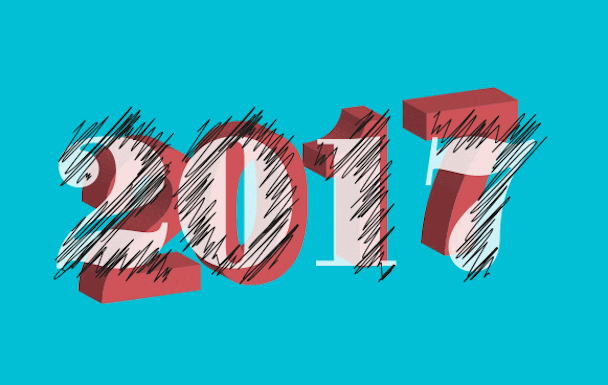Three trends that could make marketing better in 2017
It is most likely that the universe and its trends don’t really care that the calendar digits have flipped over. That being the case, here are some wider trends that I believe we saw starting in 2016 and will go into 2017 and beyond.

Three positive marketing trends for 2017
Inter-agency collaboration making for better marketing, and also making marketing better
With the rising importance of interconnected media on the one hand, and budget pressures on the other, clients are expecting agencies to work together.
At WPP it’s called ‘horizontality’. Ad agencies join forces with their clients’ technology partners and digital agencies. Media agencies, using their scale, have tried to make the most of this trend by building in-house planning, creative and digital capabilities. However, more often than not they find themselves as the hubs of cross-agency collaboration. In a few cases large integrated marketing and PR agencies, are heading that way too.
As they go through those changes, all agencies also need to collaborate with growing in-house teams of tech people, designers and content people – partly due to clients looking for agile and efficient ways to respond to the market. I wonder if agencies have done enough to put in place cost-effective, agile response mechanisms.
An unexpected but positive side effect to this trend is a return to radical simplicity in brand strategy. The basic principles of most brand platforms and frameworks are the same, but agencies working to differentiate themselves give rise to superficial differences with models evolving into increasingly questionable metaphors. Onions, Temples, Keys, Keyholes, Temples, Bulbs, Fish, you name it. Worse yet, they are often clumped together, forming chimera-like creatures combining the ugliest, most scrupulous aspects of both marketing and organisational politics.
A method-salad starting point doesn't allow agencies to stay focused and work in concert. As agencies and clients both now have to keep multiple teams on the same page, they are forced to go back to the fundamental elements that everyone can agree on and understand. This creates a natural distillation process that is very healthy for brands as well as for marketing as a discipline.
Social media is finally maturing
After a period of social media overhype, that work is being refocused around pragmatic goals and accountable measurements. As social media becomes more ubiquitous, the market stops seeing it as an end-all-be-all shiny-new solution that you either buy into or no.
Instead, it’s becoming intertwined with core marketing activities. It’s now not only a part of the tool-box but the infrastructure. Vanity metrics like random likes and shares are losing popularity and are being treated with increased suspicion by clients and agencies alike. Additionally, the ‘newsroom’ approach, which agencies dabbled with over the last two years has had mixed results – a quick reaction builds the topical buzz, but not necessarily your brand; It’s a lazy approach to content marketing.
Instead, social media activity is tied back into wider marketing objectives. It’s a similar maturing process that digital has gone through. Clients now often say ‘everything is digital’ and if everything is digital, everything is social. This change isn’t going to kill specialised social media agencies right away, although they will increasingly merge with digital agencies, who will go through a similar but longer term process.
(Nearly) everybody is millennial
The use of generational theory in marketing has always been problematic, but the use of ‘millennials’ has totally broken down. This year we started feeling a backlash. At the outset, as Mark Ritson pointed out, millennials are too large a segment to, well, be considered a segment. Different sources put the start of the generation as early as 1976 and the ending as late as 2004, and stretched a North American construct across the world’s markets to boot...
Self-obsessed and narcissist? Not more than wellbeing-obsessed people in their 40s and 50s. We’re all living within a global people-rating system and react accordingly. Assertive and vocal? Not any more than other disenfranchised groups discovering the empowering effect of digital media.
Increasingly, as that highly diverse group ages, much of the qualities related to them are exposed as thinly veiled ‘oh, the youth of today’ moral panic or just signs of the times that apply to all generations. Notably, their ‘unique workplace behaviour’ – of being loyal to themselves first and seeking out opportunities for growth and skill development, can be seen not as a generational quality, but as a sensible and pragmatic reaction to the changes in the job market. In other words – if you’re not a millennial, for the good of your career you should start behaving like one.
Maybe everybody could just stop using the term for marketing in 2017. Sadly, it’s unlikely.
